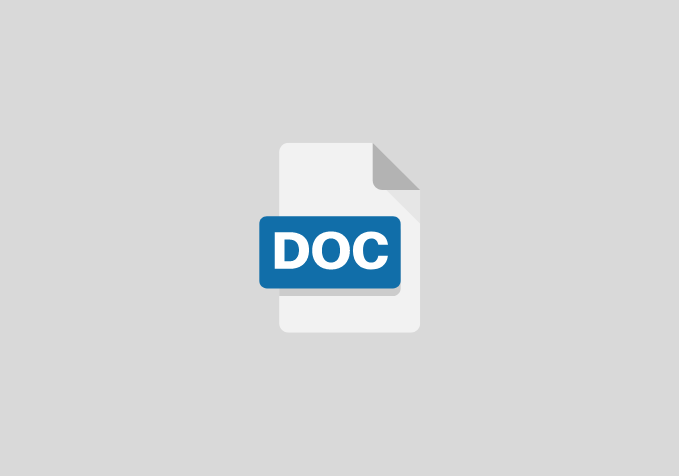Challenges of Management of Public Residential Properties in Nigeria
Chapter One
OBJECTIVES OF THE STUDY
The following are the objectives of this study:
- To examine the challenges of management of public residential properties in Nigeria.
- To analyze the effect of adequate management of public residential property on its value.
- To identify the solution to the problems of public residential property management in Nigeria.
CHAPTER TWO
LITERATURE REVIEW
INTRODUCTION
This chapter gives an insight into various studies conducted by outstanding researchers, as well as explained terminologies with regards to challenges of management of public residential properties in Nigeria.
The chapter also gives a resume of the history and present status of the problem delineated by a concise review of previous studies into closely related problems.
CONCEPT OF BUILDING MAINTENANCE AND MANAGEMENT
According to Sidney (1991) permanent structure requires less attention than temporary ones, any house owner will confirm that even the best constructed building needs constant attention. If the attention is delayed, what started as being something very minor is liable to turn quickly into an expensive operation? Similarly, Seeley (1987) asserted that no building can exist throughout its span without one form of maintenance or the other; it is to say that much can be done at the design stage in order to reduce the amount of subsequent maintenance work. According to Seeley (1987) maintenance work on a building should commence from the day the contractor leaves the site.
The necessity for maintenance work on buildings is noted in the fact that all buildings, as well as the materials and components therein, deteriorate or suffer loss in aesthetic, strength and or functional value, with exposure to the elements of weather over time. The appearance and life span of a building and also the quality of the materials would be affected depending on the manner to which maintenance is adhered to, in the building (Seeley, 1987). If the design process is to be enhanced, the building team need to come together and contribute towards the building’s maintainability at the project inception rather than leaving it for the maintenance personnel at the end of construction to battle with the curative measure (Adejimi, 1998).
CHAPTER THREE
RESEARCH METHODOLOGY
INTRODUCTION
This chapter describes methods and procedures used in conducting this research work. The description of the procedure is done under the following headings:
- Research design,
- Area of study
- Population of the study
- Sample and sampling procedure
- Instrumentation
- Procedure for data collection
- Procedure for data analysis
RESEARCH DESIGN
The surveys research method was used for this study. This was considered appropriate because survey design generally can be used to effectively investigate problems in realistic settings. The survey technique will also allow the researcher to examine several variables and use multi-variate statistics to analyze data.
AREA OF THE STUDY
The study was conducted in Akwa Ibom State, Nigeria. Akwa ibom is the most beautiful cities in Nigeria. The population of Akwa Ibom State, according to the Akwa Ibom State Government is 9.5 million, a number disputed by the Nigerian Government and judged unreliable by the National Population Commission of Nigeria. The study was carried out Champion Breweries plc Uyo Akwa Ibom State.
POPULATION OF THE STUDY
The population consists of the entire populace of Uyo Akwa Ibom State.
CHAPTER FOUR
DATA PRESENTATION, ANALYSIS AND INTERPRETATION
This chapter is devoted to the presentation, analysis and interpretation of the data gathered in the course of this study. The data are based on the number of copies of the questionnaire completed and returned by the respondents. The data are presented in tables and the analysis is done using t-Test. The chi-square test was used in the validation of the hypothesis.
CHAPTER FIVE
FINDINGS, CONCLUSION AND RECOMMENDATION
The objectives of the study was to
- To examine the challenges of management of public residential properties in Nigeria.
- To analyze the effect of adequate management of public residential property on its value.
- To identify the solution to the problems of public residential property management in Nigeria.
Findings from the study showed the following:
- There are challenges of management of public residential properties in Nigeria.
- There is a significant effect of adequate of public residential property on its value.
- Government should be more responsible for the management of public residential properties in Nigeria.
- Adequate management of public residential property on its value would reduce the housing problems in Nigeria.
REFERENCES
- Adejimi, A. (1998) Optimizing management of design processes for effective maintenance of public buildings in Lagos State. Unpublished M.Sc Thesis, Building Department, University of Lagos.
- Alexander, K. (1996) Facilities management, theory and practice London: E & FN Spon.
- Anonymous (1989): Editorial, “New Nigerian” Newspaper 6 August. P.1
- Arayela, O. and Adams, J.J. (2001) Building disasters and failures in Nigeria: Causes and remedies, AARCHES Journal, Vol. 1 No.6 P.72-76.v
- Bello, N. A. (2008): The Economics of Land and Housing. (Revised Edition). Abeokuta: DENAB Publication.
- Both, H. (1999) Maintenance and failure behaviour of technical systems design application of a simulation model. Unpublished Ph.D Thesis, University of Eindhoven, The Netherlands.
- Cheetham, D. W. (1992) Defects in modern buildings, Buildings Journal, July P. 18.
- CIB (2004): Globalization and Construction: Meeting the Challenges; Reaping the Benefits [Online] Write up for the Call for Papers, http://www.sce.ait.ac.th/GC2004 [Accessed 10th October 2005].
- Cornick, T. (1996) Computer Integrated building design; E & FN Spon London, p. 7-23.
- David, W. W. and Arthur, B. (1989) “Management to maintain quality in Building. Proceedings of implementation of quality in construction, Copenhagen, pp 212 – 18.


